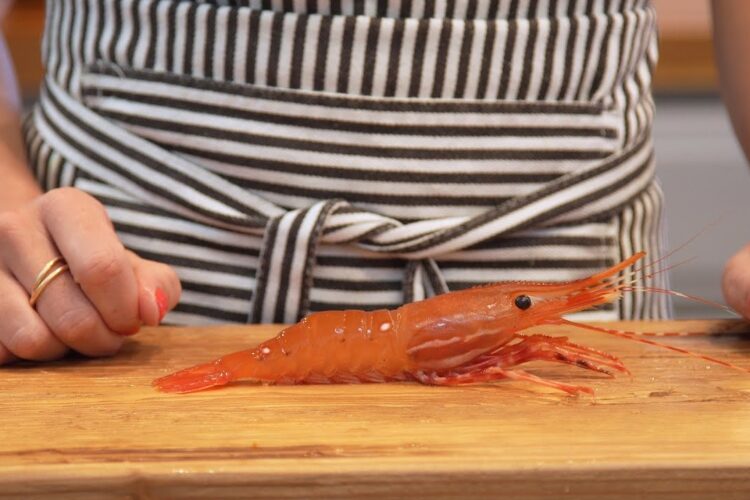Amaebi, also called sweet shrimp, is a delicacy coveted by sushi lovers for its tender texture and unique sweetness. These small pink shrimp harvested primarily from Suruga Bay, Japan have gained immense popularity at sushi restaurants in Singapore. This article will explore why locals adore amaebi, the health benefits of consuming it, and the various Japanese dishes featuring this premium seafood.
What Makes Amaebi So Special?
Sweet Briny Flavor – Amaebi carries a subtle sweetness complemented by an umami sea saltiness that creates a highly desirable taste profile. The natural sugars impart the “sweet” descriptor.
Delicate Texture – Careful processing leads to plump amaebi with a pleasingly firm yet yielding bite. This tests a sushi chef’s knife skills when slicing the shrimp.
Subtle Crunch – A thin, crunchy external shell contrasts the inner soft meatiness. This textural complexity heightens the eating experience.
Vibrant Color – Quality amaebi possess a lively pink-orange hue across the body and head from carotenoids. Dull or spotty coloring can indicate lower grade shrimp.
Roe – Female shrimp contain tasty sacs of bright orange roe (eggs) that provide a salty pop of flavor when eating the shrimp body.
Health Benefits of Amaebi
Amaebi nutrition includes high-quality protein for muscle repair and building, vitamin B12 for nerve and blood health, selenium to support thyroid function and immunity, and astaxanthin which acts as a powerful antioxidant in the body. The omega-3 fatty acids in amaebi also supply anti-inflammatory effects.
Popular Amaebi Dishes
Sushi – Buttery slices of amaebi nigiri or maki rolls are sushi specialties, often paired with caviar-like tobiko flying fish roe.
Tempura – Light tempura batter coating lets the shrimp’s natural flavor shine through when fried
Sashimi – Thinly sliced raw amaebi makes for simple yet elegant plates. Wasabi and ponzu sauce add kick.
Hot Pot – Cooked briefly in simmering broths, amaebi retains its tender texture at hot pot meals.
Rice Bowls – Mixed with seasonings and rice, bowls of amaebi provide salt, spice and sweetness in one dish.
Salads – Chilled amaebi lends protein to salads with its sweetness contrasting bitter greens.
Soups – Miso soups often feature plump amaebi as a protein-rich ingredient.
How To Clean Amaebi Or Sweet Japanese Prawns Properly Before Consuming It?
Here are some tips for properly cleaning amaebi or sweet Japanese prawns before eating:
Carefully remove the head and shell, trying to keep the body intact. Peel off the thin outer shell, leaving the tail on for presentation.
Using a sharp knife or kitchen shears, cut along the back of the amaebi and remove the digestive tract or intestinal vein. This will further prevent any unpleasant flavors.
Check the prawn body for any remaining shells or debris and remove them with tweezers or your fingers. Rinse under cool running water.
Place the peeled amaebi in a colander and rinse thoroughly with several changes of cold water to eliminate any gritty material.
Pat the shrimp dry with paper towels. Moisture left on the surface will cause the shrimp to boil rather than sear when cooking.
Place cleaned amaebi in a single layer on a tray or plate. Cover with plastic wrap and refrigerate until ready to use. Consume within the same day for best quality.
When cooking, rinse the amaebi once more and pat dry to remove any accumulated moisture before seasoning and searing, grilling or battering.
Properly cleaning amaebi ensures you taste only the shrimp’s pure sweetness without any fishy or unpleasant flavors. Taking particular care to remove the vein and rinse away grit will lead to the best eating experience.
Conclusion
With its highly sought after flavor, delightful texture and nutritional content, it’s easy to see why amaebi has become a darling of Japanese cuisine in Singapore. From sushi to hot pots, amaebi elevates any meal into a sweet, maritime treat for the senses.

